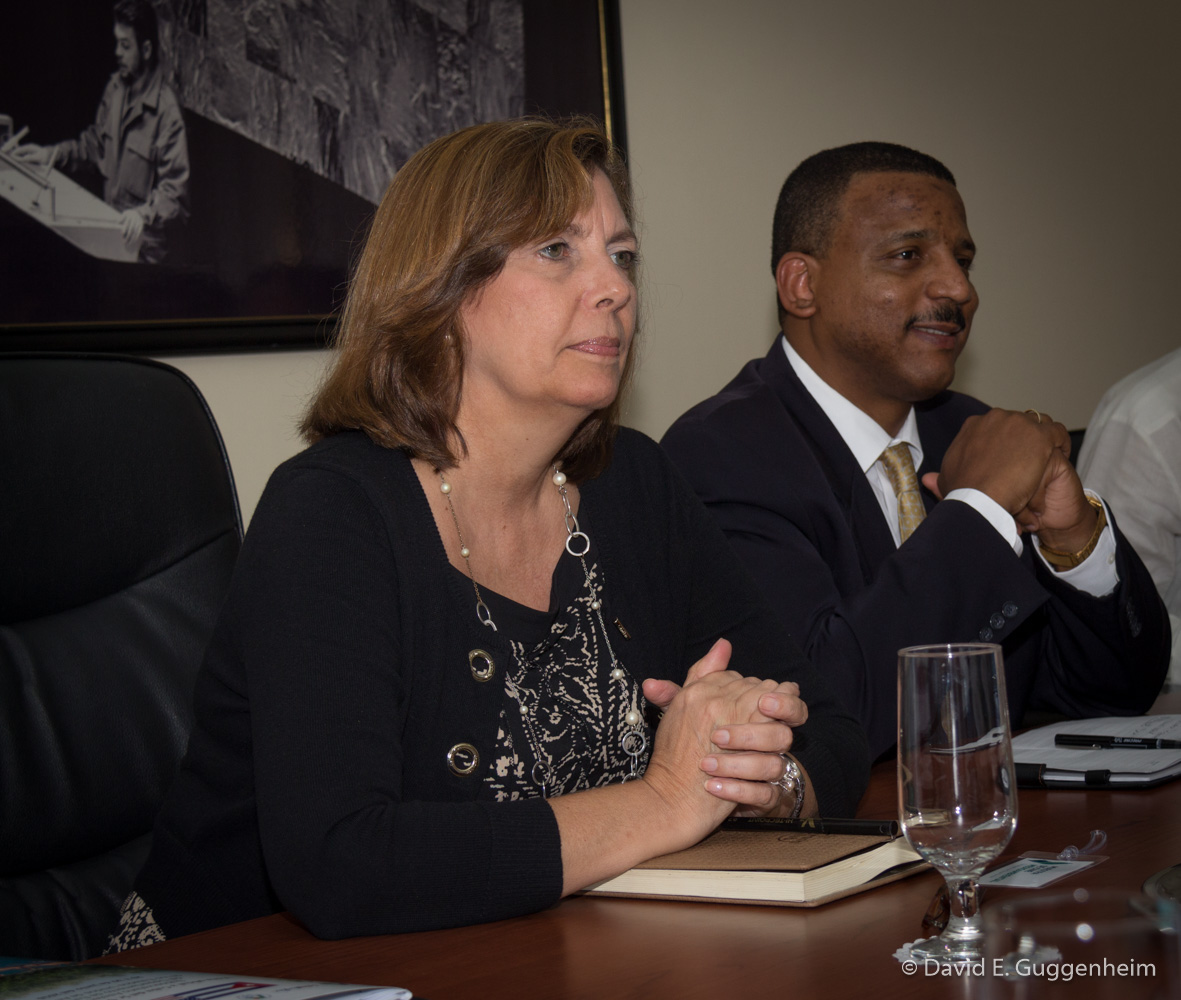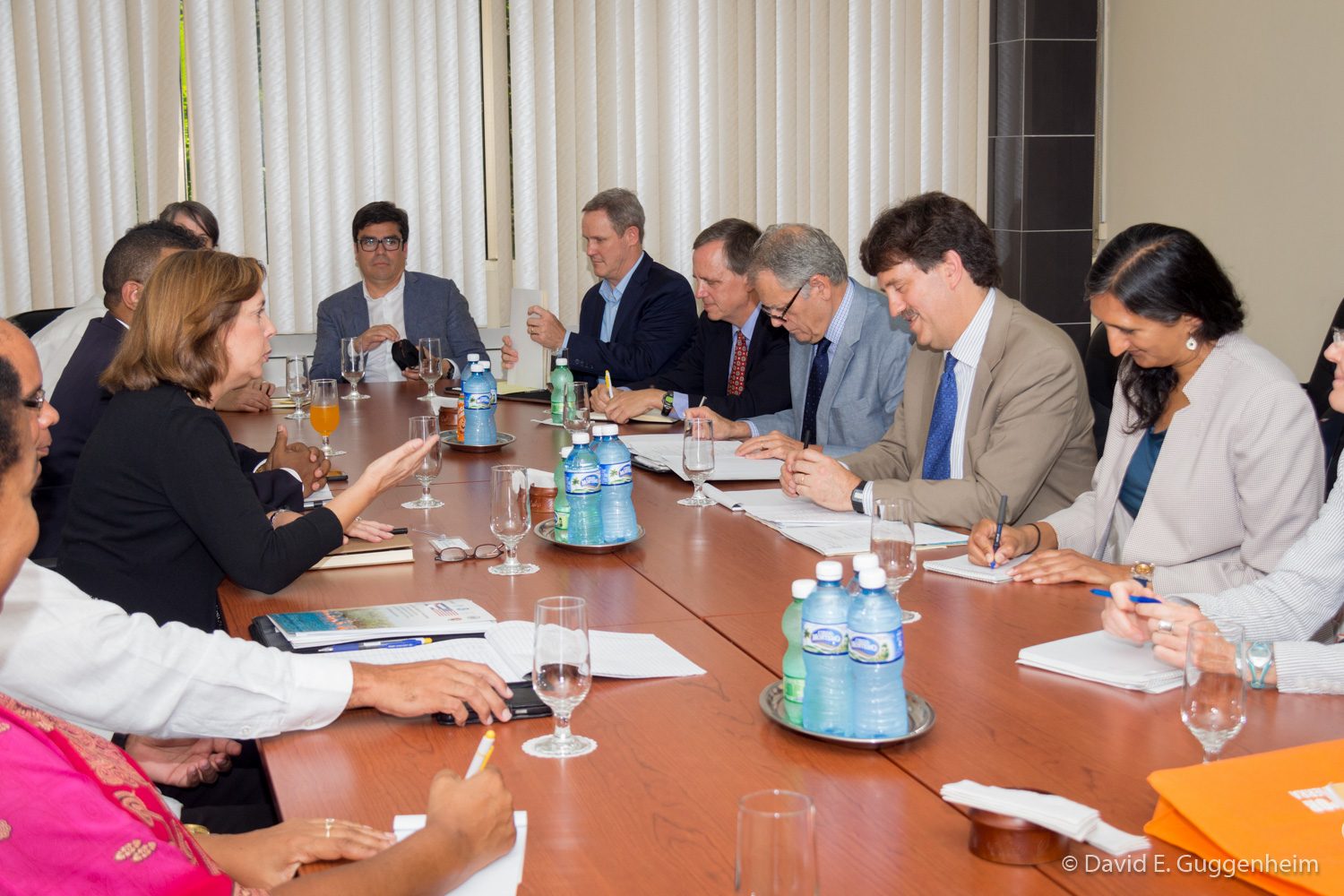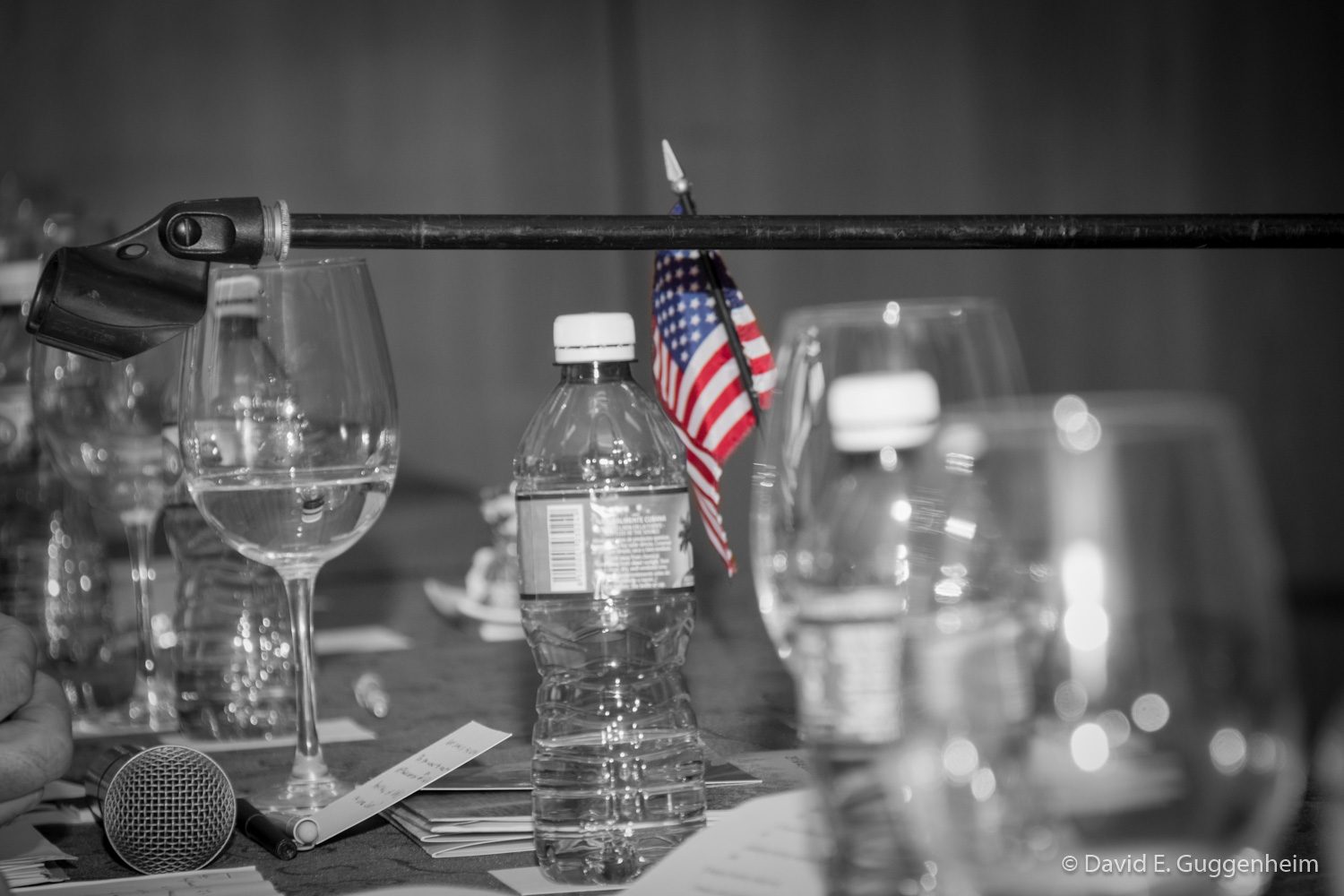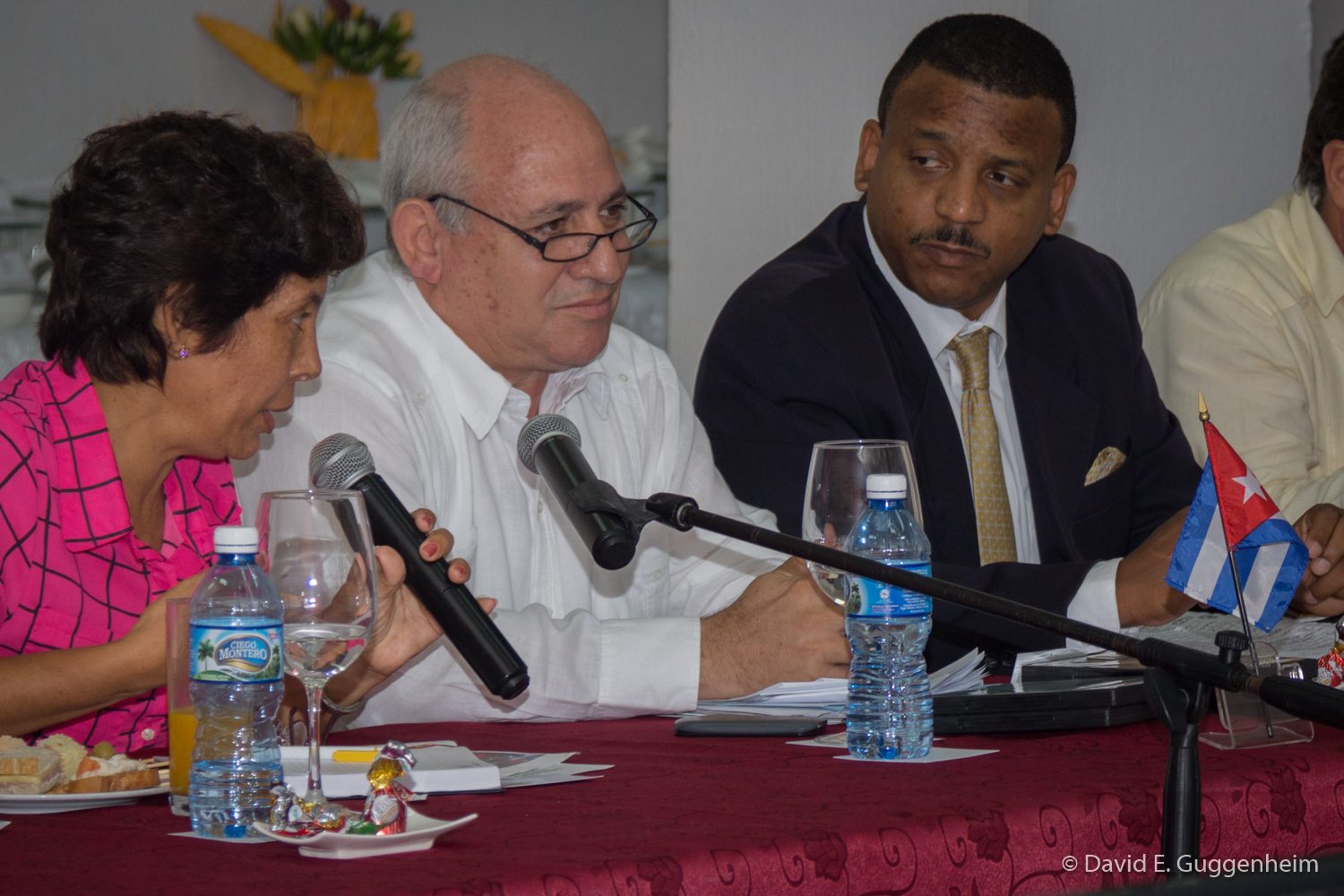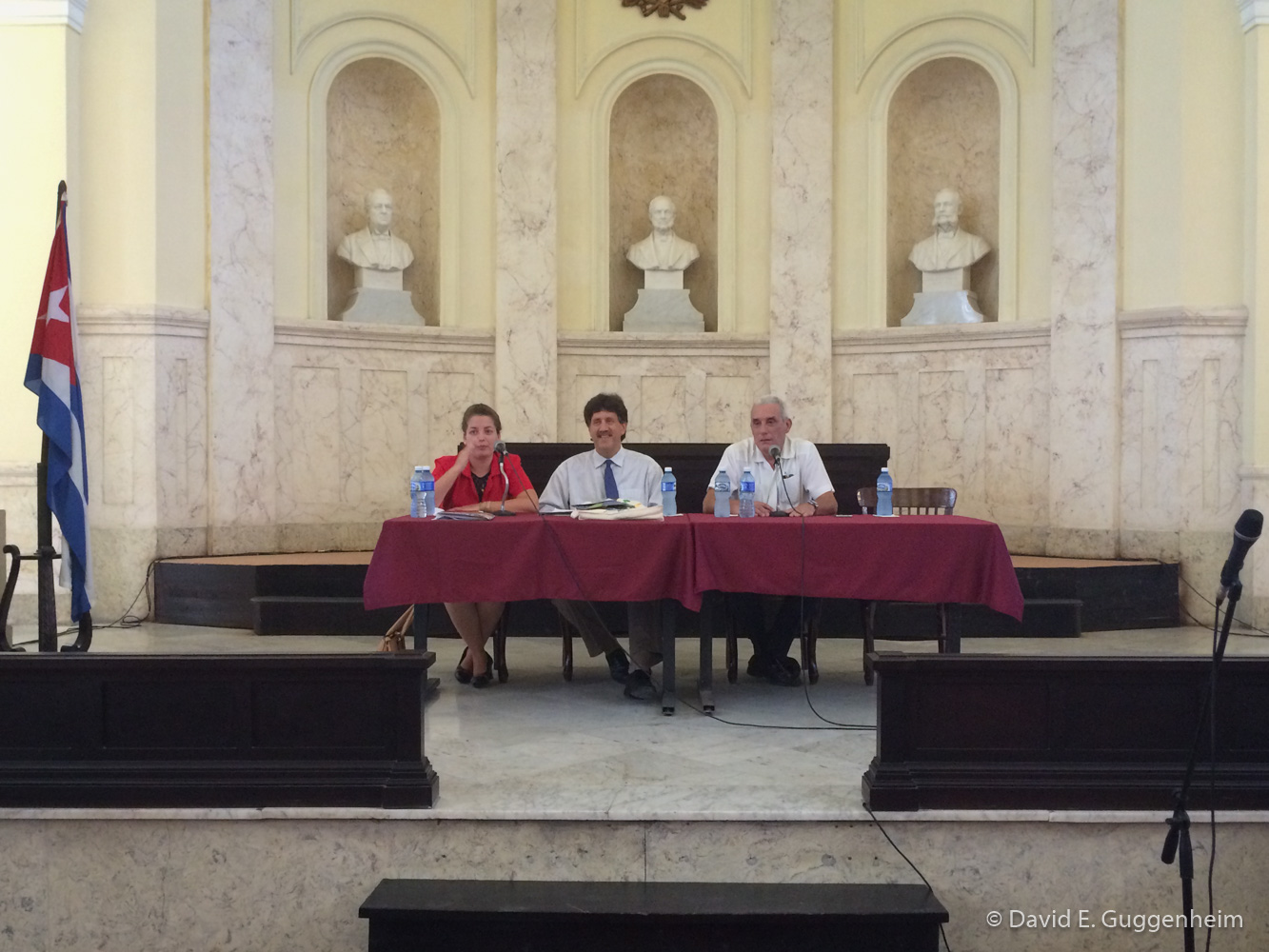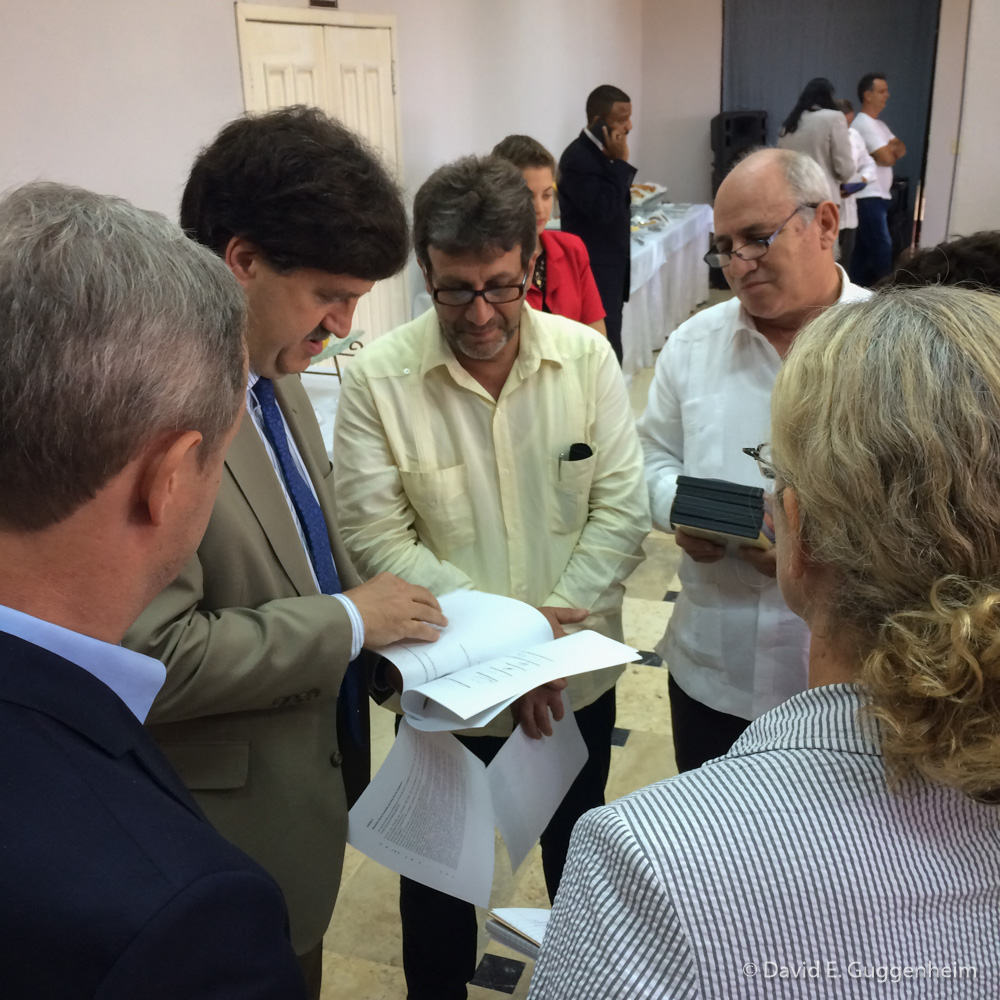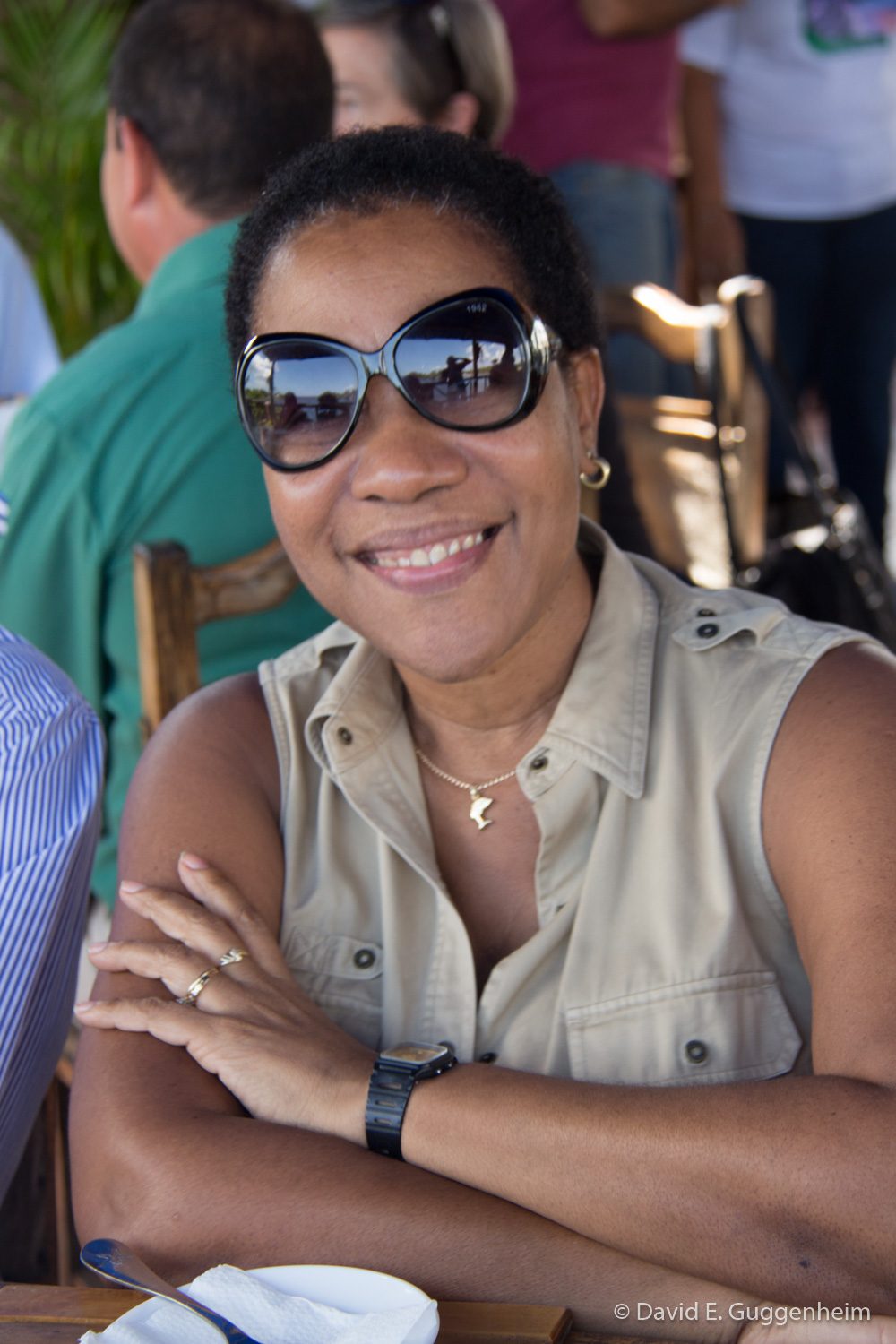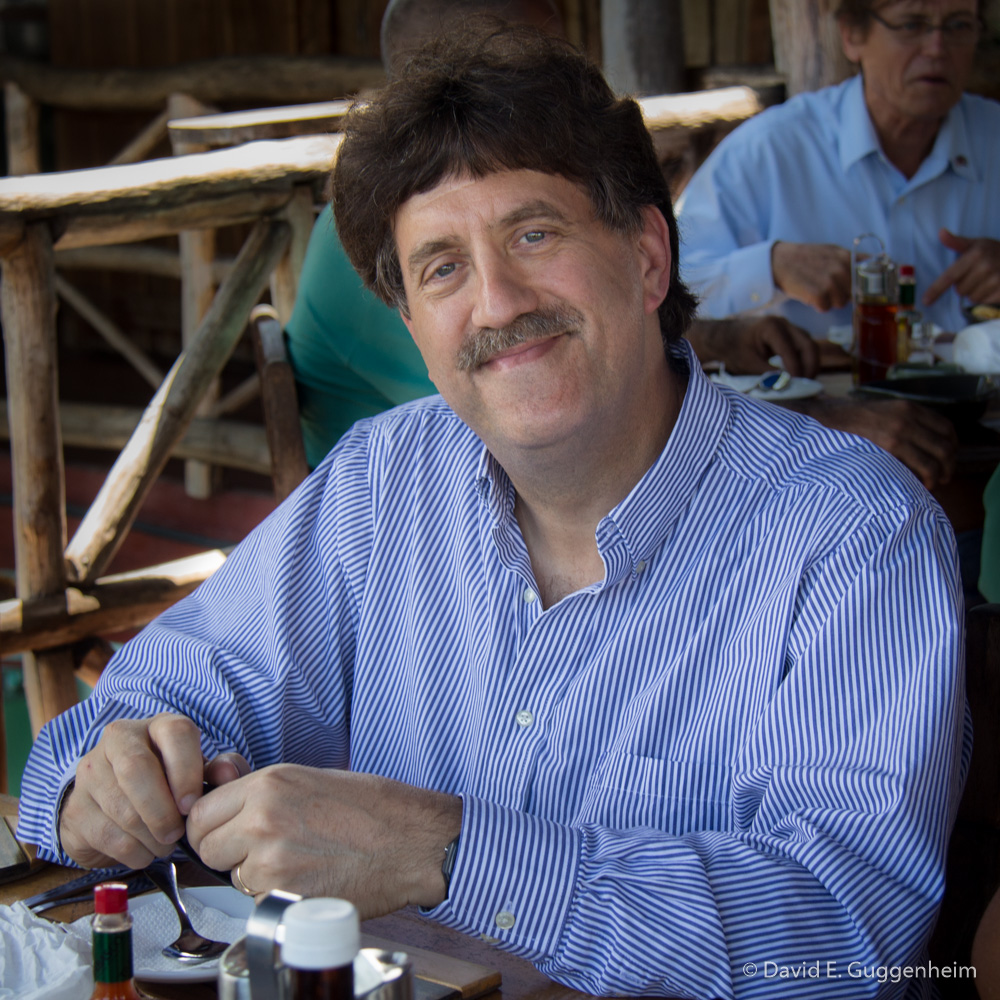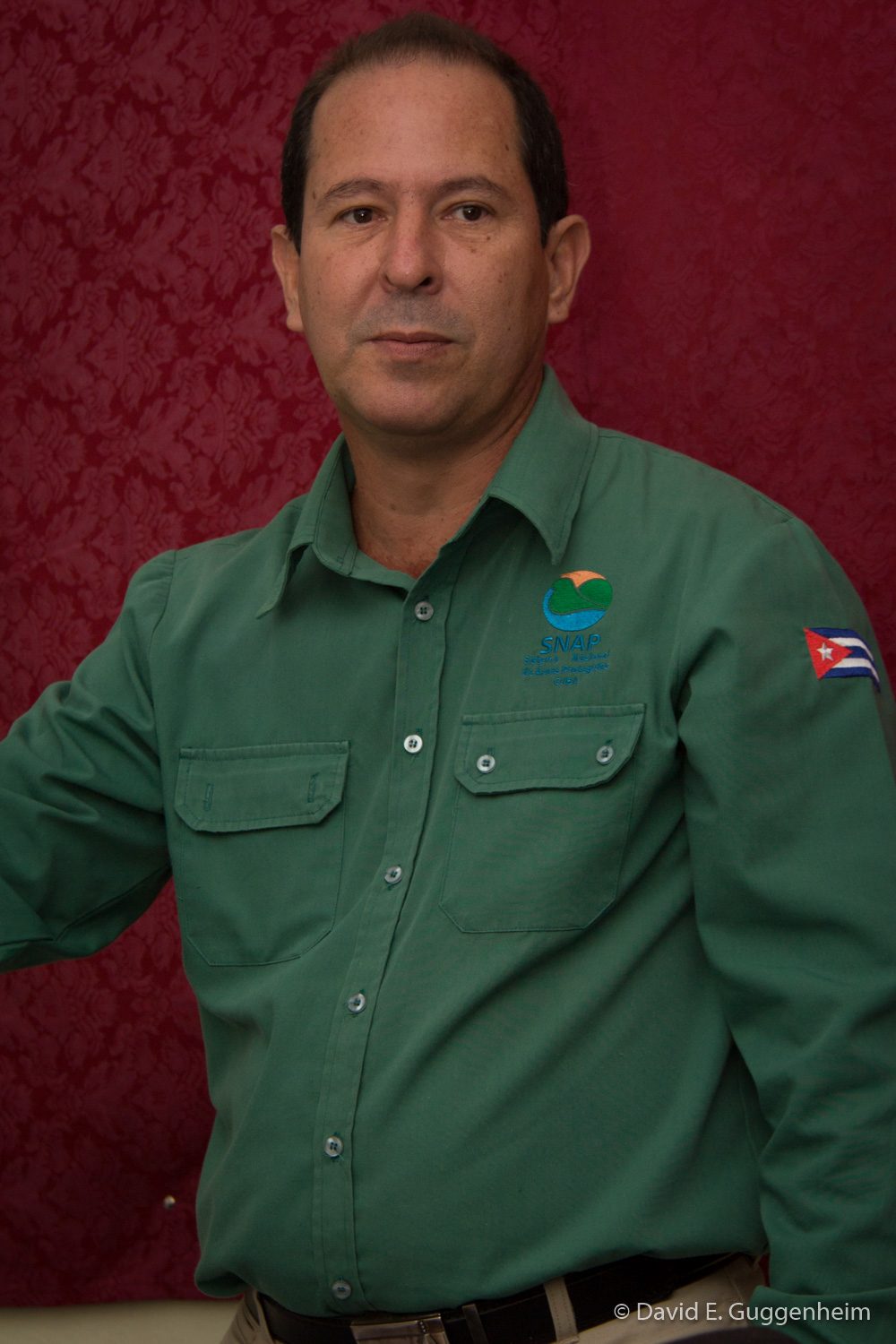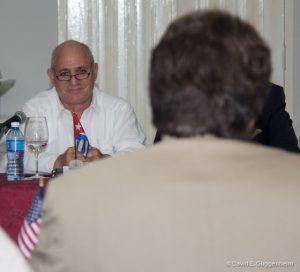
Salt water diplomacy in action: Vice Minister José Fidel Santana Núñez (left) and Ambassador David Balton (right, facing away) at the negotiating table in Havana, leading their respective delegations in the implementation of one of the two first agreements between Cuba and the U.S. since the normalization of relations (Photo: D. Guggenheim)
Following the beginning of normalization of relations between Cuba and the U.S. in December 2014, many have recognized the marine conservation community for being instrumental in helping to restore diplomatic relations through its strong example of collaboration during the years when relations were virtually nonexistent and for building a strong foundation of enduring trust.
The first two formal agreements between Cuba and the U.S. came in November 2015 — both focused on the environment, one of them the “U.S.-Cuba Joint Statement on Cooperation on Environmental Protection.” (You can find full text of statement on the State Department web site here.) The second agreement focused on marine conservation, including a “sister sanctuary” program between our countries.
A small number of U.S. non-governmental organizations (NGOs), including Ocean Doctor, were asked by the State Department to help plan and carry out an official government-to-government meeting to begin the historic process of implementing the U.S.-Cuba Joint Statement on Cooperation on Environmental Protection. The meeting took place last month (June 28-July 1, 2016) and set the stage for the next chapter in U.S.-Cuban collaboration on environmental issues, building in part from the experience that the NGO community has amassed during the years when there were no diplomatic relations.
The delegations were led by José Fidel Santana Núñez, Vice Minister of the Cuban Ministry of Science, Technology and the Environment and Ambassador David Balton, Deputy Assistant Secretary for Oceans and Fisheries at the U.S. Department of State. The U.S. delegation also included Ambassador Jeffrey DeLaurentis, head of the U.S. embassy in Havana, and representatives of the National Oceanic and Atmospheric Administration (NOAA). Delegates made a site visit to Ciénaga de Zapata (Zapata Swamp) to learn about “Cuba’s Everglades,” a renowned wetland area, and, not without irony, also paid a visit to the Bay of Pigs, site of the failed military invasion of Cuba carried out by a CIA-sponsored paramilitary group in 1961. The focus of the group was on the Bay’s protected area and healthy coral reefs.
During the formal meetings, the group covered a wide range of topics, while reaffirming its commitment to facilitate the work of NGOs on both sides. Better connecting Cuba and the U.S. by facilitating its participation in a range of regional bodies and meetings was a recurring theme. Ocean Doctor proposed a bilateral fund to help Cuban scientists better participate in such meetings and networks. Numerous other topics were discussed as areas ripe for collaboration, including collaboration on fish stock assessments in the Gulf of Mexico, creating alternatives for fishermen whose catch must be reduced, and dealing with the pervasive issue of marine debris.
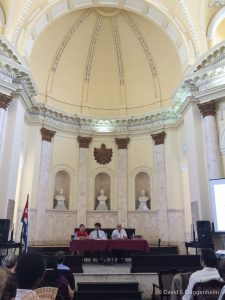
Sergio Pastrana, Executive Director of the Cuban Academy of Sciences (right) and Ambassador David A. Balton, U.S. Department of State (center) and an interpreter (left) lead the NGO session at the Cuban Academy of Sciences in Havana
The delegations participated in an NGO-focused meeting at the Cuban Academy of Sciences, led by Sergio Pastrana, the Academy’s Foreign Secretary and Executive Director. Representatives from a range of Cuban NGOs joined the discussion and discussed areas of possible collaboration. One important area of discussion was the need for collaboration to address the tsunami norteamericano, as many Cubans call it, the flood of tourism and foreign investment coming from the U.S. following the normalization of relations. Ocean Doctor president, Dr. David E. Guggenheim, discussed CUSP, the Cuba-U.S. Sustainability Partnership, an initiative formed to deal with this important topic. Earlier this year, CUSP partners organized a meeting in Washington, DC between the U.S. National Academy of Sciences and the Cuban Academy of Science, to explore collaboration on this important issue.
In the end, the meeting represented a small starting point, but with enormous possibilities. After so many years without true government-to-government collaboration, there is hope that the level of scientific research and conservation efforts can be elevated to a new as Cuba and the U.S. formally join forces to understand and protect the beautiful waters that they share.

